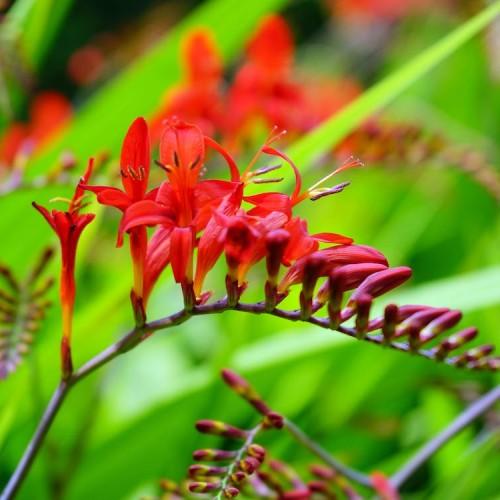
montbretia
Crocosmia 'Emberglow'
Cycle:
Perennial
Watering:
Average
Hardiness Zone:
5 - 9
Flowers:
Flowers
Sun:
Full sun,part shade
Leaf:
Yes
Growth Rate:
High
Maintenance:
Moderate
Care Level:
Medium
watering
Montbretia plants should be watered twice a week when they are actively growing in spring and summer. Water the plants enough to ensure the soil remains evenly moist, but be careful not to overwater. When the weather is especially hot and dry, you may need to water a little more often. In the fall, water the plants only when the soil is dry to the touch. During the winter months, water the montbretia plants only when the soil is bone dry.
sunlight
Montbretias (Crocosmia 'Emberglow') require 6 to 8 hours of full sunlight every day in order to thrive. These plants should be placed in a location that receives the most direct sun throughout the day, such as a south-facing window. However, it is important to avoid leaving them in direct sunlight during the hottest parts of the day, as this can lead to too much stress and damage the plant. During the summer months, they should be provided with some partial shade in the afternoons to ensure their optimal growth.
pruning
Montbretia (Crocosmia 'Emberglow') should be pruned in late winter or early spring while the plant is still dormant. Start by removing any dead, diseased, or damaged foliage, and then cut back the entire plant to about 6-8 inches above soil level. Follow this by removing any flowers spikes that have bloomed for the season. This will help control the overall size and shape of the plant and encourage it to produce more flowers the following season. Take care to avoid pruning any emerging or tender shoots.
